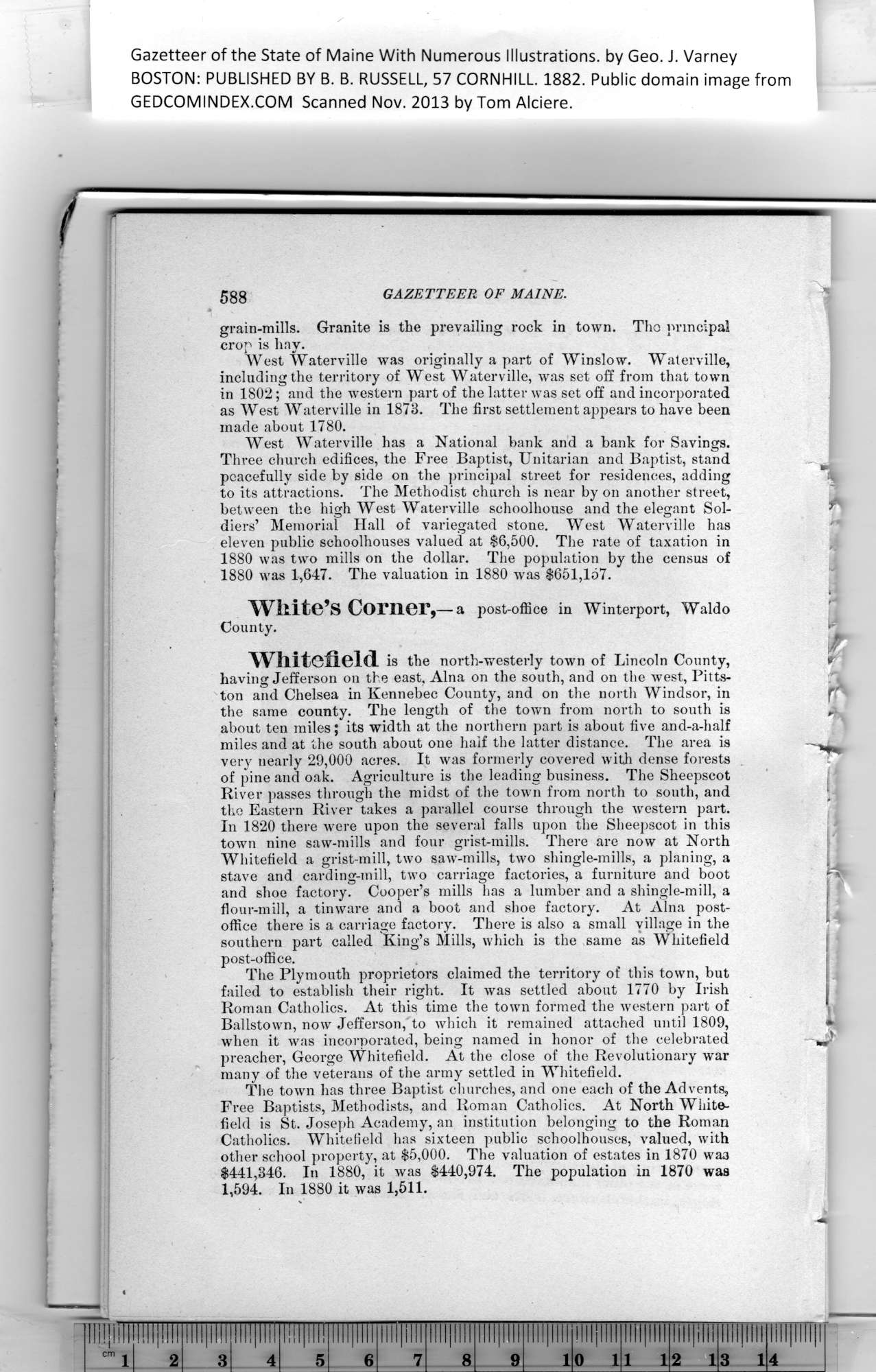Click on the image to view a larger, bitmap (.bmp) image suitable for printing. HOME PAGE ... REFERENCE PAGE ... THIS GAZETTEER’S PAGE |

Click on the image above for a larger, bitmap image suitable for printing.
|
Gazetteer of the State of Maine With Numerous Illustrations, by Geo. J. Varney BOSTON: PUBLISHED BY B. B. RUSSELL, 57 CORNHILL. 1882. Public domain image from 588 GAZETTEER OF MAINE. ^ grain-mills. Granite is the prevailing rock in town. Tho principal West Waterville was originally a part of Winslow. Waterville, West Waterville has a National bank and a bank for Savings. Three church edifices, the Free Baptist, Unitarian and Baptist, stand ^ peacefully side by side on the principal street for residences, adding : to its attractions. The Methodist church is near by on another street, between the high West Waterville schoolhouse and the elegant Sol- diers’ Memorial Hall of variegated stone. West Waterville has eleven public schoolhouses valued at $6,500. The rate of taxation in 1880 was two mills on the dollar. The population by the census of 1880 was 1,647. The valuation in 1880 Avas $651,157. White’s Corner,—a post-office in Winterport, Waldo Whitefield is the north-westerly toAvn of Lincoln County, r having Jefferson on the east, Aina on the south, and on the Avest, Pitts- the same county. The length of the toAvn from north to south is r about ten miles; its width at the northern part is about five and-a-half In 1820 there were upon the several falls upon the Sheepscot in this Pa The Plymouth proprietors claimed the territory of this town, but The toAvn has three Baptist churches, and one each of the Advents, Free Baptists, Methodists, and Roman Catholics. At North White- PREVIOUS PAGE ... NEXT PAGE This page was written in HTML using a program written in Python 3.2 |